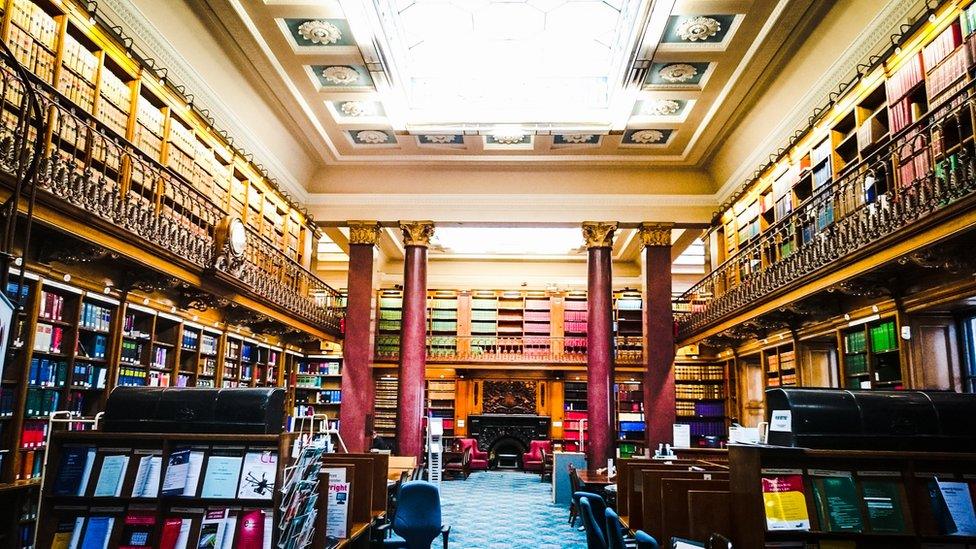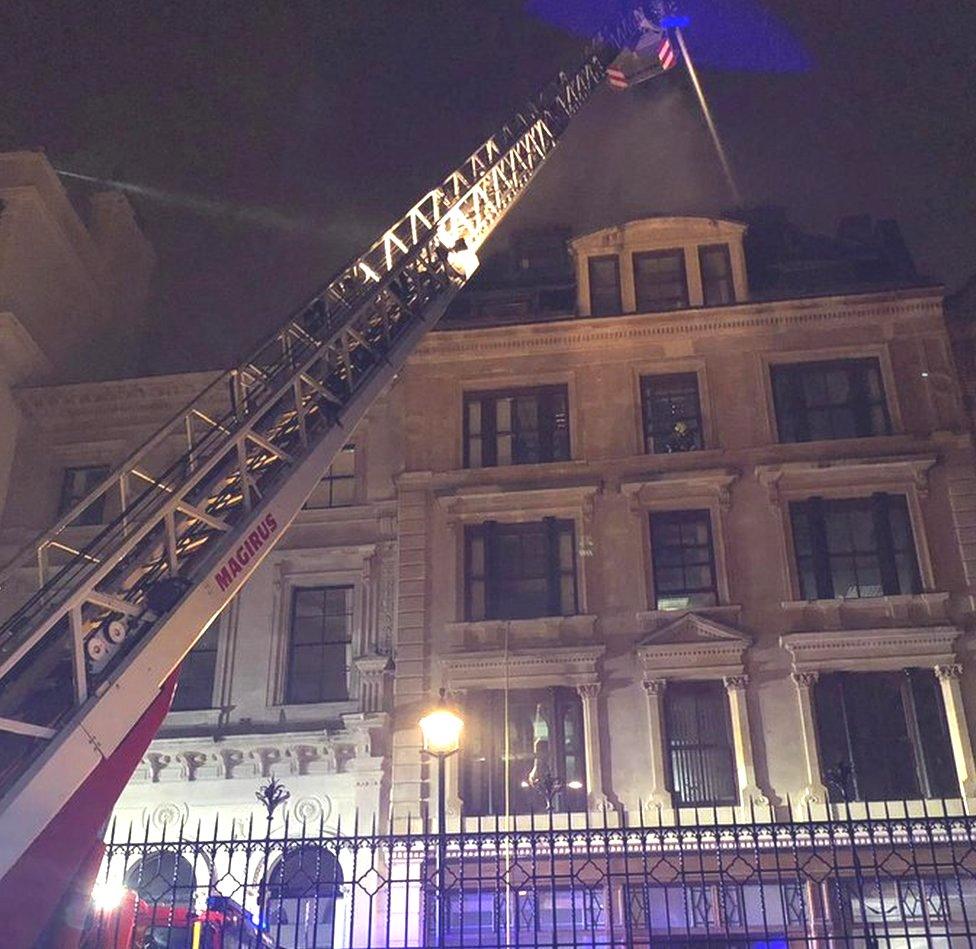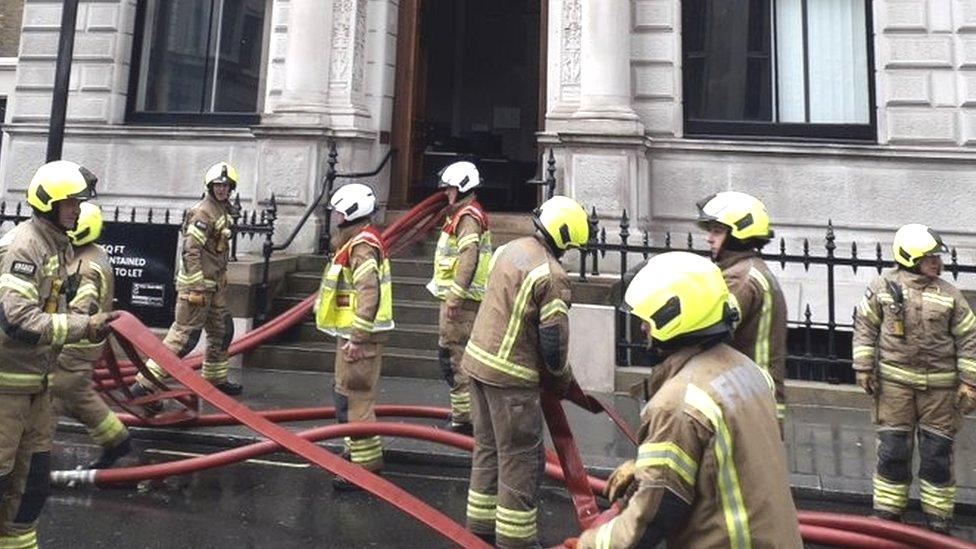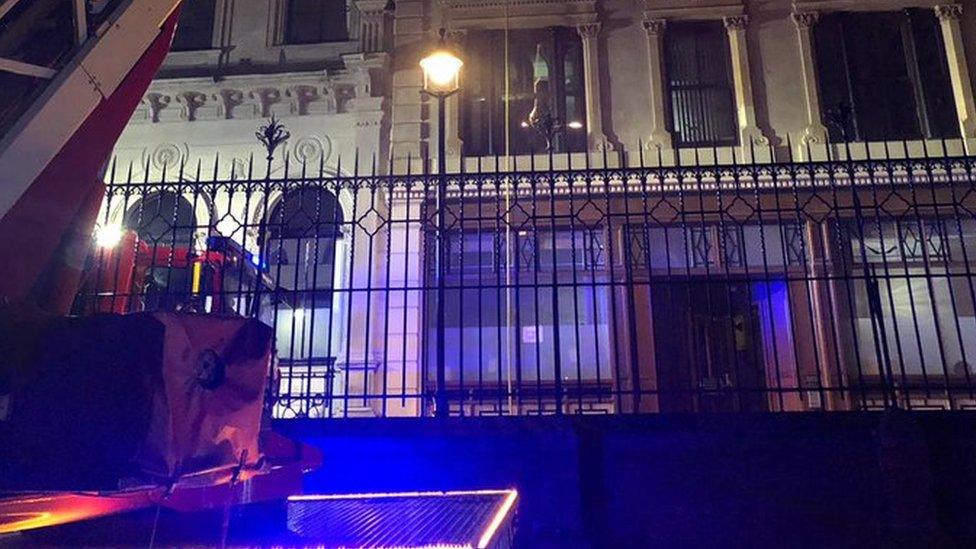Law Society fire: Historic library avoids serious damage
- Published

The library at London's Law Society escaped the flames
A fire in London's historic legal district was contained to one building and is understood not to have affected a famous legal library.
About 150 firefighters were called to the Law Society's offices in Holborn's Chancery Lane on Saturday night.
The blaze destroyed the upper floors of number 114, but did not spread to the Law Society's library next door.
The affected offices housed the Law Society Gazette, a legal magazine for solicitors in England and Wales.
Gazette editor Paul Rogerson said archive material had recently been moved to the library at number 113 as the publication prepared to move into the building in a few weeks time.

An investigation into the fire in Holborn's Chancery Lane is under way
A lawyers' dinner had been taking place when the fire broke out and some 28 members left the building before fire crews arrived at about 22:40 GMT.

Allow X content?
This article contains content provided by X. We ask for your permission before anything is loaded, as they may be using cookies and other technologies. You may want to read X’s cookie policy, external and privacy policy, external before accepting. To view this content choose ‘accept and continue’.

No-one was injured.
A spokesman for the Law Society said: "The library holds lots of very special memories for the legal profession."
"We understand the fire service went to some lengths to mitigate any damage."

No-one was injured in the blaze
Law Society chief executive Paul Tennant said he was "extremely upset" that fire had broken out in a "wonderful building".
Holborn and the surrounding area has been associated with the legal profession since medieval times.
The library's collection includes old legal text books and case law including some dating back to the 16th century.
The library was the reason why the Law Society was established in 1825, according to its literature.
It was built in 1832 and lit by candles until gas lighting was installed in 1857 when it was extended. Radiators were installed in 1904.
The tables and shelves are made from English oak and the building was awarded grade II listed status for being one of the earliest to use cast iron rather than solid marble to create the pillars.
The cheaper technique known as 'Scagiola', used crushed marble to encase the cast iron pillars.
Related topics
- Published2 February 2020
